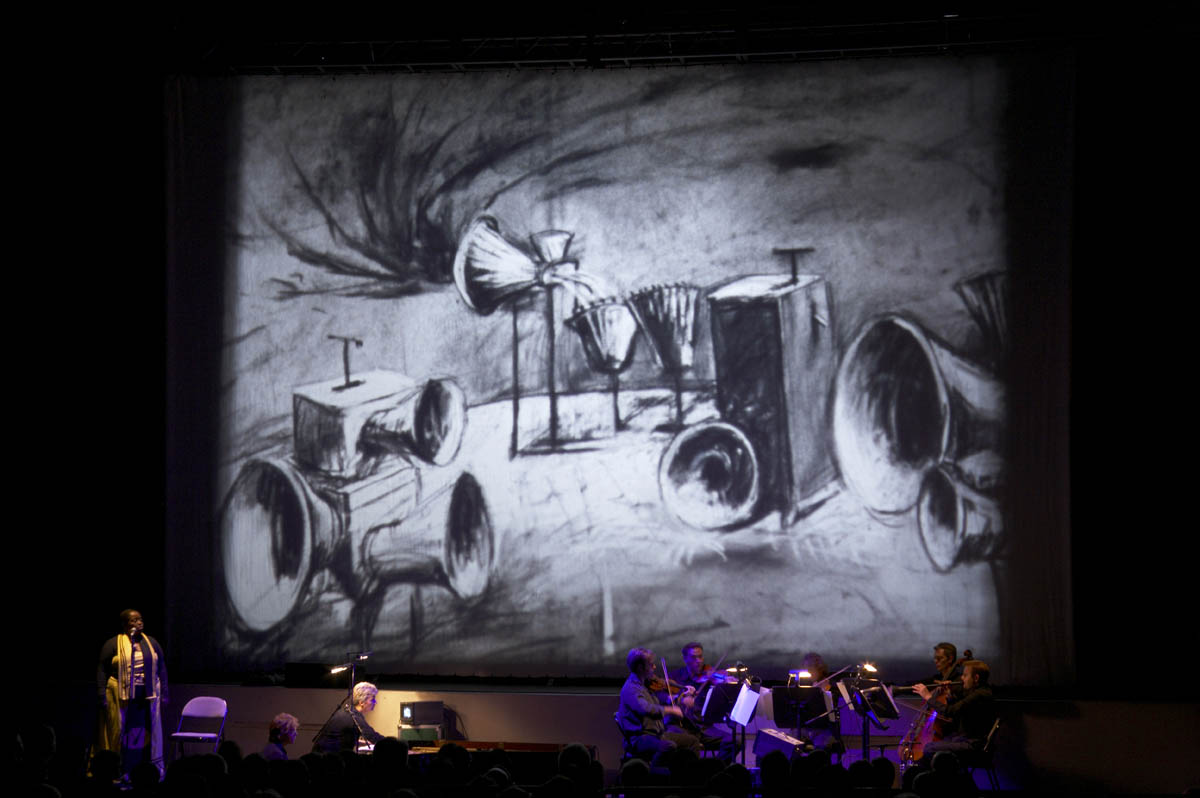
“In considering the concept of the static drawing being animated or passing over into “another state”, William Kentridge’s animated drawings from the 1970s are still representing the type of crossover now possible, in fact inevitable, between drawings, etchings, animation and sculpture. Since 1989, he has created series of charcoal drawings towards animated films known as Drawings for Projection.
These ten short animated films—made over a period of more than 20 years—are intimate, personal meditations by Kentridge that resonate with the recent turbulent history of South Africa. “The distinctive animation technique used by Kentridge, in which he draws, erases and redraws parts of his charcoal sketches over and over, allows traces of the past to remain visible in the present. This technique also reveals the importance of remembering—and forgetting—in the work of Kentridge.”——e-flux.com
In terms of Kentridge’s performed drawings in conjunction with animation, Anne Rutherford (2013) writes that:
For Kentridge, the body becomes a medium in itself. He is not a dancer but he knows the poetry of a body moving in space. To his teacher, the famous Jacques Lecoq, the body was the vehicle of creativity and experimentation and the essence of creative theatre was play – an openness to discover what can emerge from movement and play.
(Rutherford 23)
+ Kentridge describe his techniques as cross-fertilization between different mediums and genres, which is essential at play with the experimental exploration of my practice.
+ The reconstruction of the drawings, collages, thoughts and ideas that he puts together given us a pin-hole to how he makes sense of the world, and embodying the openness of ideas though the physical act.
+ He encourages not to have a script or a clear plan, to not know the answer, and embrace that provisionality and uncertainty
Overton, Neill. “Drawing as Performance: The Art Gallery Meets Experimental Theatre.” Fusion Journal, no. 7, 2015.
